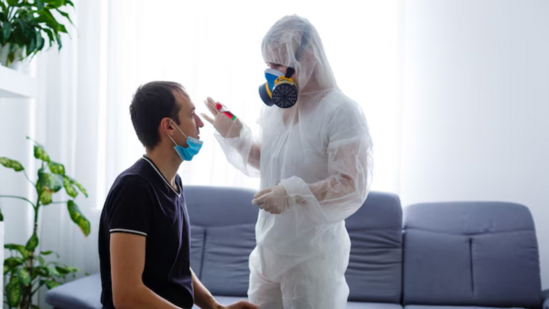As Asia grapples with a fresh surge in COVID-19 cases, experts warn of a potential new wave that could affect millions if proactive measures aren’t taken. The past few years have taught us invaluable lessons on how to prevent, manage, and overcome outbreaks — but complacency is not an option.
Governments, healthcare systems, and individuals must work together to prevent another health crisis. Here’s how we can all play our part to stop the upcoming wave of COVID-19 in its tracks.
1. Stay Informed and Aware
One of the biggest mistakes during the early days of the pandemic was the spread of misinformation. To prevent another wave, stay updated with:
- Verified information from WHO, CDC, or local health departments.
- Updates on new variants and their symptoms.
- Changes in travel regulations and quarantine protocols.
Being informed allows you to act fast and responsibly.
2. Vaccination and Booster Shots Are Critical
Vaccination remains the strongest shield against severe illness and hospitalization. Here’s what to keep in mind:
- Get fully vaccinated if you haven’t already.
- Stay updated with booster shots, especially for vulnerable groups like the elderly or immunocompromised.
- Watch for new vaccine guidelines for emerging variants.
Governments should ensure easy access to vaccines and run awareness campaigns to tackle vaccine hesitancy.
3. Mask Up in Crowded and Enclosed Spaces
While some regions have relaxed mask mandates, masks are still effective:
- Wear N95 or surgical masks in public transport, malls, airports, or hospitals.
- Encourage your family, especially children and the elderly, to wear masks in crowded places.
Masking is a simple, proven way to block virus transmission, especially in indoor settings.
4. Practice Good Hygiene
The basics still matter:
- Wash hands with soap for at least 20 seconds.
- Use alcohol-based hand sanitizers when soap isn’t available.
- Avoid touching your face, especially eyes, nose, and mouth.
Increased hygiene awareness can help reduce not just COVID-19, but other infections too.
5. Monitor Symptoms and Test Early
Don’t ignore even mild symptoms like sore throat, fatigue, or a slight cough:
- Get tested immediately if symptoms appear.
- Use home testing kits if available.
- Isolate yourself to prevent spreading it to others.
Early detection can stop chains of transmission and reduce pressure on hospitals.
5. Monitor Symptoms and Test Early
Don’t ignore even mild symptoms like sore throat, fatigue, or a slight cough:
- Get tested immediately if symptoms appear.
- Use home testing kits if available.
- Isolate yourself to prevent spreading it to others.
Early detection can stop chains of transmission and reduce pressure on hospitals.
6. Improve Indoor Ventilation
COVID-19 spreads more easily indoors, especially in poorly ventilated areas:
- Open windows and doors when possible.
- Use HEPA filters or air purifiers at home and in offices.
- Encourage schools and workplaces to improve ventilation systems.
Clean air is essential for reducing virus spread indoors.
7. Limit Social Gatherings if Cases Surge
Stay flexible with plans:
- Postpone or limit gatherings during spikes in your area.
- Opt for outdoor events instead of indoor ones.
- Use video calls to stay connected with friends and family.
Being cautious during high-risk periods can prevent larger outbreaks.
8. Protect the Vulnerable
We must look out for those most at risk:
- Help elderly family members get their booster shots.
- Deliver groceries or medicine if they can’t go out.
- Encourage remote work options for those with health concerns.
Caring for the vulnerable is key to reducing hospital admissions and deaths.
9. Support Mental Health During Preventive Measures
Isolation and health anxieties can take a toll:
- Stay connected with friends virtually.
- Practice mindfulness, meditation, or regular exercise.
- Seek professional help if you’re feeling overwhelmed.
Balancing mental health with physical health is vital in long-term pandemic prevention.
10. Government Action: Surveillance, Support, and Swift Response
Governments across Asia must:
- Enhance genomic surveillance to detect new variants.
- Ensure stockpiling of PPE, oxygen, and medicines.
- Offer economic support to people during localized lockdowns or quarantine periods.
Strong government action combined with individual responsibility can help prevent another crisis.
Final Thoughts
The fight against COVID-19 isn’t over. Rising cases in Asia are a reminder that the virus continues to evolve — and so must our strategies. Prevention is not just a public health responsibility but a personal one.
By staying vigilant, following health guidelines, and supporting our communities, we can avoid another devastating wave and move one step closer to a healthier, safer future.
Stay safe, stay informed, and act responsibly — because preventing the next wave starts with you.

